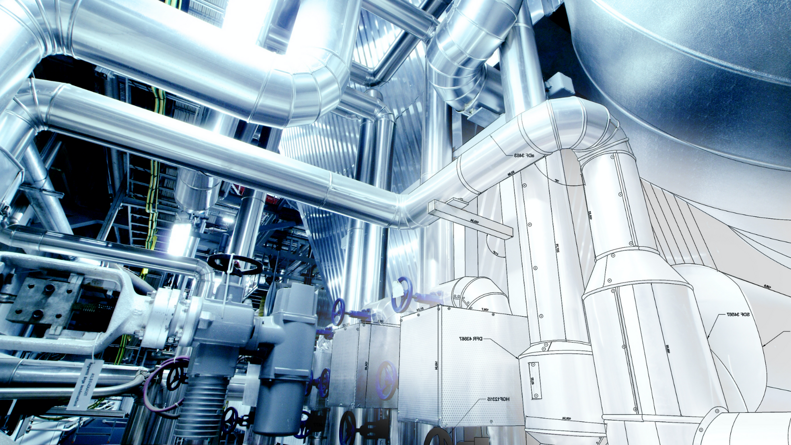
Created by Webmasterdesigner - © 2025 All right reserved

LA GESTIONE DEI RIFIUTI: UN PROBLEMA AMBIENTALE MONDIALE
Il problema della gestione dei rifiuti riguarda tutti i paesi del mondo e, con l'aumento della popolazione, il problema della gestione dei rifiuti cresce in modo esponenziale.
Ogni paese sceglie sistemi diversi per risolvere questo problema: dalla raccolta dei rifiuti al riciclo dei materiali, allo smaltimento in discarica, all'incenerimento, ma fino ad oggi, senza risultati efficaci.
Molti paesi nel mondo hanno aumentato significativamente la necessità di osservare metodi di riciclo e riutilizzo dei materiali recuperati dai RSU e da altri rifiuti. Ma il riciclo e il recupero energetico riguardano solo circa un quarto del totale dei RSU e degli altri rifiuti; i restanti tre quarti vengono smaltiti in discarica o inceneriti (bruciati).
Questi metodi tradizionali di smaltimento dei rifiuti stanno diventando sempre meno praticabili. In alcuni paesi, dove lo spazio in discarica è limitato, o dove nuove leggi e regolamenti non permettono lo smaltimento dei RSU in discarica o le tariffe richieste per lo smaltimento in discarica sono molto costose, i metodi tradizionali di smaltimento in discarica e incenerimento stanno diventando meno fattibili.
Oltre a consumare terreno prezioso, la decomposizione dei RSU genera metano, un gas serra, e i percolati possono anche rappresentare una minaccia per le acque superficiali e sotterranee. Inoltre, alcune aree hanno vietato l'incenerimento dei rifiuti a causa dei negativi impatti ambientali.
Riteniamo sia necessario abbandonare i vecchi sistemi di gestione dei rifiuti pericolosi per l'ambiente come:
DISCARICA
INCENERIMENTO
PIROLISI
Metodo più antico, per lo smaltimento dei rifiuti nelle discariche. I rifiuti vengono digeriti anaerobicamente e producono biogas utilizzato come fonte di riscaldamento o energia.
Tecnologia di combustione di massa in presenza di ossigeno. I rifiuti vengono bruciati negli inceneritori e convertiti in cenere e gas serra nocivi.
Trattamento termico in assenza di ossigeno a bassa temperatura.
Syngas, liquido di pirolisi e coke ottenuti come prodotti.
SOLUZIONI DI GASSIFICAZIONE AL PLASMA DEI RIFIUTI
Di fronte al costoso problema dello smaltimento dei rifiuti e al bisogno di maggiore energia nel mondo, molti paesi stanno rivolgendo la loro attenzione alla Tecnologia di Gassificazione al Plasma dei Rifiuti, una tecnologia collaudata e rispettosa dell'ambiente; è la migliore tecnologia per convertire i rifiuti in prodotti utili come elettricità, fertilizzanti, carburanti per il trasporto e prodotti chimici. In media, gli impianti convenzionali di valorizzazione energetica dei rifiuti che utilizzano l'incenerimento di massa possono convertire una tonnellata di RSU in circa 550 kilowattora di elettricità.
Con la tecnologia di gassificazione al plasma dei rifiuti, una tonnellata di RSU può essere utilizzata per produrre fino a 1.000 kilowattora di elettricità, un modo molto più efficiente e pulito di utilizzare questa fonte di energia. La gassificazione al plasma dei rifiuti può aiutare il mondo a gestire i propri rifiuti e trasformarli (100% dei rifiuti) in prodotti energetici.

COS'È LA GASSIFICAZIONE
La gassificazione è un processo unico che trasforma un materiale a base di carbonio, come i rifiuti solidi urbani (RSU) o la biomassa, in altre forme di energia senza effettivamente bruciarlo. Invece, la gassificazione converte i materiali di scarto solidi e liquidi in un gas attraverso una reazione chimica. Questa reazione combina quei materiali a base di carbonio (noti come materie prime) con piccole quantità di aria o ossigeno (ma non abbastanza da bruciare i materiali), scomponendoli in molecole semplici, principalmente una miscela di monossido di carbonio e idrogeno.
Ciò che viene prodotto è un gas di sintesi (Syngas) che può essere convertito in elettricità e prodotti di valore. Con la gassificazione, i RSU e i rifiuti non sono più inutili, ma diventano materie prime per un gassificatore. Invece di pagare per smaltire e gestire i rifiuti per anni in una discarica, utilizzarli come materia prima per la gassificazione riduce i costi di smaltimento e lo spazio in discarica, e converte quei rifiuti in elettricità, combustibili, prodotti chimici o fertilizzanti di valore.

LA GASSIFICAZIONE È UTILIZZATA IN TUTTO IL MONDO
La gassificazione è stata utilizzata in tutto il mondo su scala commerciale per produrre "gas di città" dal carbone per il riscaldamento, l'illuminazione e la cottura per oltre 200 anni. È stata utilizzata per più di 80 anni dalle industrie chimiche, di raffinazione e dei fertilizzanti e per più di 36 anni dall'industria dell'energia elettrica.
Attualmente svolge un ruolo importante nel soddisfare il fabbisogno energetico in tutto il mondo, utilizzando un'ampia gamma di materie prime che includono carbone, coke di petrolio e biomassa. La gassificazione viene ora adattata per applicazioni su scala più piccola per risolvere il problema dello smaltimento dei rifiuti ed estrarre energia preziosa dai rifiuti. quote.
LA GASSIFICAZIONE PUÒ RECUPERARE ENERGIA PREZIOSA DAI RIFIUTI
Nel processo di gassificazione, i rifiuti solidi urbani (RSU) non sono un combustibile, ma una materia prima per un processo di conversione chimica avanzata. Non c'è combustione.
La gassificazione può convertire i RSU che normalmente verrebbero inceneriti in un syngas pulito e utile.
Questo syngas pulito può poi essere utilizzato per produrre energia e prodotti di valore, come prodotti chimici, carburanti per il trasporto, fertilizzanti e elettricità.
La gassificazione non compete con il riciclo; anzi, lo migliora. Metalli, vetro e altri materiali che non possono essere gassificati vengono tipicamente separati dal flusso dei rifiuti prima di essere inviati al processo di gassificazione. Inoltre, molte plastiche presenti nei RSU non possono essere riciclate e finirebbero comunque in discarica. Queste plastiche costituiscono ottime materie prime ad alto contenuto energetico per la gassificazione, riducendo così la quantità di materiali non riciclabili che altrimenti finirebbero in discarica.
Ci sono significativi benefici ambientali nella gassificazione dei RSU, tra cui la riduzione della necessità di spazio in discarica, la diminuzione delle emissioni di metano derivanti dalla decomposizione dei materiali organici in discarica e la riduzione del rischio di contaminazione delle acque superficiali e sotterranee proveniente dalle discariche.
LA GASSIFICAZIONE NON È INCENERIMENTO
VANTAGGI DELLA GASSIFICAZIONE AL PLASMA
SYNGAS E PRODOTTI ENERGETICI
ITC LTD
MAPPA DEL SITO
MAPPA DEL SITO
International Technical Consultants Ltd
19 Leyden Street
London - E1 7LE
United Kingdom
Company Reg. 04555793
Vat: GB843855596
◙ INDIRIZZO LEGALE
■ Home
■ Gassificazione al plasma dei rifiuti
■ La gassificazione non è incenerimento
■ Vantaggi della gassificazione al plasma
■ Syngas e prodotti energetici
■ Serra sterile
■ Serra sterile - La struttura
■ Serra sterile - Vantaggi
■ Soluzioni di illuminazione a LED
■ Edifici ecologici
CONTATTO
info@itcltd.net
itcltd2@gmail.com
■ Energia Rinnovabile
■ Trattamento delle Acque
■ Servizi
■ Contatto
■ Scaricad
■ Privacy Cookies Policy
Creato da Webmasterdesigner - © 2025 Tutti i diritti riservati


